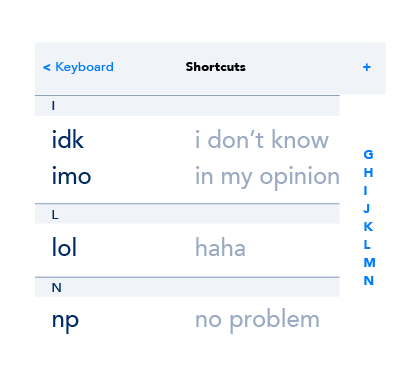Various types of texting.
Everyone seems to have their own unique way of texting. While some utilize complete sentences, others use shortcuts. The challenge is to understand the user’s intention and when to reply.

The language of the user.
Even if two humans speak the same language, they may have different ways of speaking it—e.g., using slang terms or even misspellings. There are endless possibilities when it comes to the usage of language. Humans don’t always understand humans, so it can be quite difficult for a chatbot to grasp all the complexities of language, even with AI and NLP.
NLP is not without limitations.
While NLP is quite the innovation, it is not as advanced yet to understand the combination of local languages or varying ways of expressing one’s self. For example, where one human might describe a drink as a soda, another might call it pop or a soft drink. Plus, language evolves with new words being created every day. Even with tagging, sentiment analysis, and recommendations, NLP still has a long way to go.

Humans can be random.
Human beings can run on emotion, in addition to logic.
User behavior, and its context, is often led by these factors. Moreover, the way humans express their emotions frequently changes. In one instance, someone might be looking for a recommendation, and in another, they might be attempting to direct the chatbot. As such, it’s critical that chatbots are designed to interpret the full spectrum of human emotion.
Users want human-level interactions.
Despite the fact that humans know they are interacting with a chatbot, they still want the chatbot to interact with them as another human would. Getting the best experiences does not come with robotic-feeling or cold responses.
Limited attention spans.
It’s been suggested that modern homo sapien has the attention span of a goldfish. While this is an overstatement, there are certainly many things fighting for our attention nowadays. In order for a chatbot to be successful, it must cut through the noise and quickly deliver a satisfying user experience. With distracted humans, how do chatbots become more engaging and grab the user’s attention? The more engaging the chatbot, the higher the likelihood the user will return.
How to notice user intent.
Humans don’t want to repeatedly hear, “Sorry, I do not understand.” They want to have normal conversations with chatbots. Similarly, if a user asks a chatbot for the next play coming into their local theater, they don’t want the chatbot to respond with the nearest playground.
Potential security risks.
In the age of AI, hackers are more equipped than ever before to exploit chatbot’s weaknesses and steal data. They can also create and/or emulate chatbots. To prevent these and more threats, the chatbot must be well maintained with the right security protocols embedded into the system. Of course, even the most secure systems are never 100% secure, 100% of the time.



